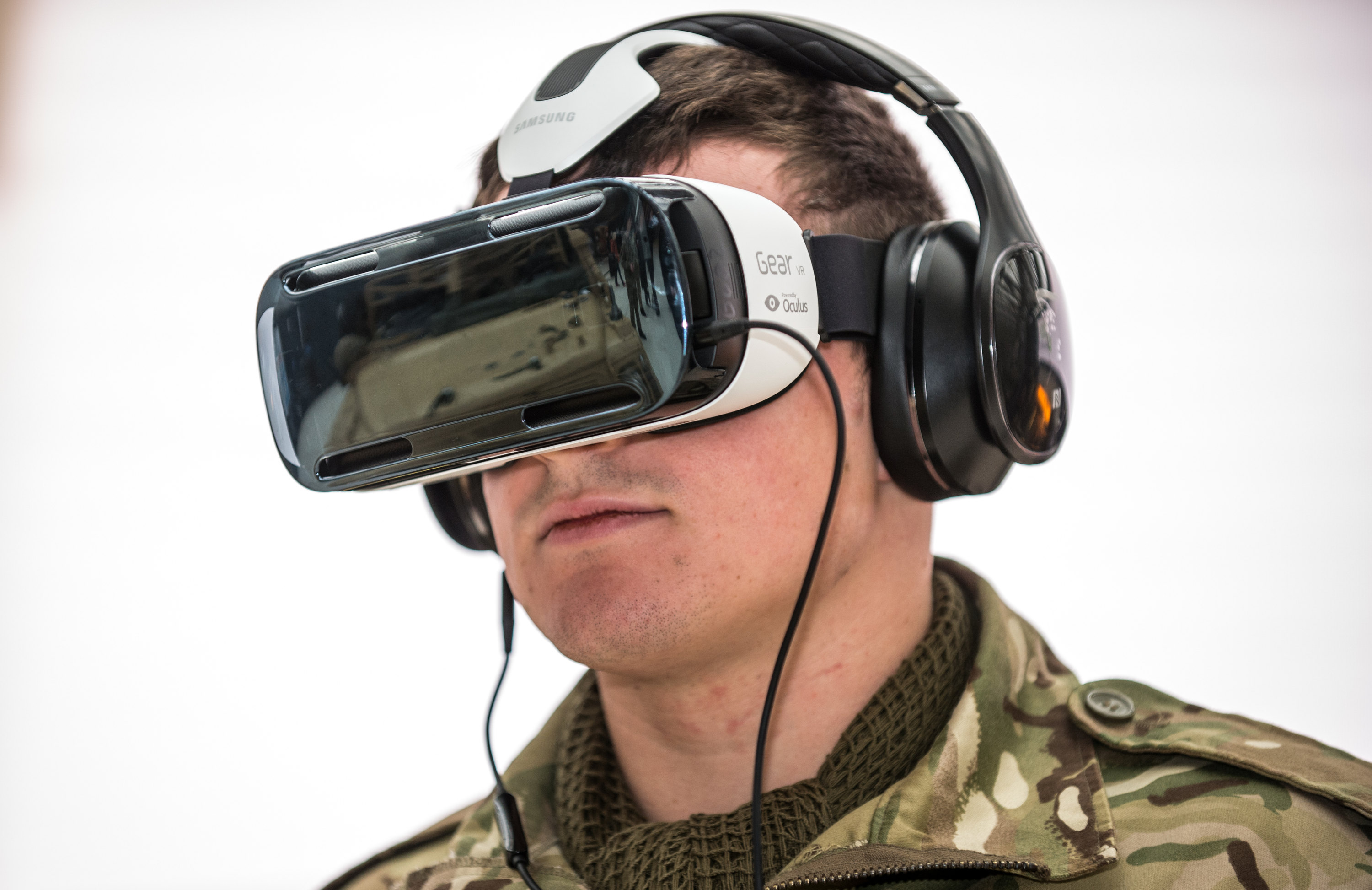|
Group VR
Group VR is a term created by McCann New York and Framestore New York for the group virtual reality experience created for the project Field Trip to Mars which launched in April 2016. The term was first published by Adweek on April 21, 2016. Group VR was also used as a term to describe kid neons group VR platform and the Virtual Reality Mix tapes. Mainly focusing on groups of people in short VR films and works where they could identify each other within the story in a bricks and mortar environment. In mid 2015 and VR mixtapes late 2015 through first half of 2016 before they grew in to a VR festival and then the virtual reality cinema in Collingwood Australia. That screens group VR films to 12 people on a custom gear vr platform where the audience can identify each other and is corriographed around the story. Concept Using no goggles or HMD (head-mounted display A head-mounted display (HMD) is a display device, worn on the head or as part of a helmet (see helmet-mounted ... [...More Info...] [...Related Items...] OR: [Wikipedia] [Google] [Baidu] |
Framestore
Framestore is a British visual effects and computer animation studio based on Chancery Lane in London, England. The company was founded in 1986. Framestore specializes in visual effects for film and prestige TV, advertising, rides, and immersive experiences. It is the largest production house in Europe, employing roughly 3,000 staff, including 1,000 in London, and 1,500 across studios in Chicago, New York, Los Angeles, Montreal, Melbourne and Mumbai. History Foundation Framestore was founded in 1986 by William Sargent and Sharon Reed, together with three friends. Tim Webber joined Framestore in 1988 and led the company's push into digital film and television, developing Framestore's virtual camera and motion rig systems. In 1992, Mike Milne started the CGI department, adding computer-generated imagery animation to the company's range of facilities. Merger with CFC In 1997, Framestore acquired the Computer Film Company, which was one of the UK's first digital film visual eff ... [...More Info...] [...Related Items...] OR: [Wikipedia] [Google] [Baidu] |
Virtual Reality
Virtual reality (VR) is a Simulation, simulated experience that employs 3D near-eye displays and pose tracking to give the user an immersive feel of a virtual world. Applications of virtual reality include entertainment (particularly video games), education (such as medical, safety, or military training) and business (such as virtual meetings). VR is one of the key technologies in the Reality–virtuality continuum, reality-virtuality continuum. As such, it is different from other digital visualization solutions, such as augmented virtuality and augmented reality. Currently, standard virtual reality systems use either virtual reality headsets or multi-projected environments to generate some realistic images, sounds, and other sensations that simulate a user's physical presence in a virtual environment. A person using virtual reality equipment is able to look around the artificial world, move around in it, and interact with virtual features or items. The effect is commonly creat ... [...More Info...] [...Related Items...] OR: [Wikipedia] [Google] [Baidu] |
Head-mounted Display
A head-mounted display (HMD) is a display device, worn on the head or as part of a helmet (see helmet-mounted display for aviation applications), that has a small display optic in front of one (monocular HMD) or each eye (binocular vision, binocular HMD). HMDs have many uses including gaming, aviation, engineering, and medicine. Virtual reality headsets are a type of HMD that track 3D position and rotation to provide a virtual environment to the user. 3DOF VR headsets typically use an Inertial measurement unit, IMU for tracking. 6DOF VR headsets typically use sensor fusion from multiple data sources including at least one IMU. An optical head-mounted display (OHMD) is a wearable display that can reflect projected images and allows a user to see through it. Overview A typical HMD has one or two small displays, with lenses and semi-transparent mirrors embedded in eyeglasses (also termed data glasses), a visor, or a helmet. The display units are miniaturized and may include ... [...More Info...] [...Related Items...] OR: [Wikipedia] [Google] [Baidu] |
Cannes Lions International Festival Of Creativity
The Cannes Lions International Festival of Creativity (formerly the International Advertising Festival) is a global event for those working in creative communications, advertising, and related fields. It is considered the largest gathering of the advertising and creative communications industry. The five-day festival, incorporating the awarding of the Lions awards, is held yearly at the Palais des Festivals et des Congrès in Cannes, France. During the last week of June, around 15,000 registered delegates from 90 countries visited the Festival. They celebrated the best of creativity in brand communication, discussed industry issues, and networked with one another. The week's activities include multiple award ceremonies, as well as an opening and closing gala. History Inspired by the Cannes Film Festival, staged in Cannes since the late 1940s, a group of cinema screen advertising contractors belonging to the Screen Advertising World Association (SAWA) felt the makers of advertis ... [...More Info...] [...Related Items...] OR: [Wikipedia] [Google] [Baidu] |

